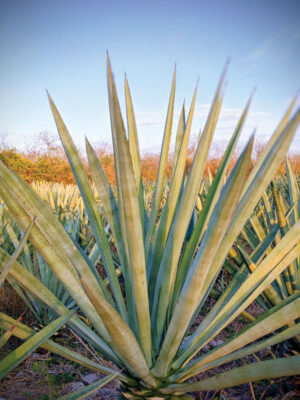By Tina Mitchell
Recommended Books
Since many of us have some extra time these days, thanks to the pandemic, it might be time to revisit (or read for the first time!) a few great books about nature. I’ve listed a number of my favorite books about nature—classics that have truly stood the test of time.
Kingbird Highway: The Biggest Year in the Life of an Extreme Birder by Kenn Kaufman (1997). One of the earliest and best “Big Year” books, “Kingbird Highway” chronicles 16-year-old Kenn Kaufman (author of “Birds of North America” and originator of the “Kaufman Field Guide” series) as he drops out of school, sticks out his hitchhiking thumb, and attempts to break the record for the number of bird species seen in one year in America. In addition to finding birds while he travels the country, he also shares his growing understanding of the natural world and his experiences with a variety of memorable characters along the way. What could be just a tedious recounting of checkmarks on a list instead features flowing narrative and richly descriptive text.
The Feather Quest: A North American Birder’s Year by Pete Dunne. (1999). Kenn Kaufman said that he (Kenn) was a birder who writes. Pete Dunne, he continued, is a writer who birds. This subtle yet important distinction rings through everything Pete Dunne pens. The former director of the Cape May Bird Observatory, Pete brings us along with his wife (the photographer for the book) on their trips during one year, ranging from Alaska to the Everglades and many points in between. Each chapter tells a complete story in itself, which makes it easy to pick the book up, read a few pages, and then go back to your chores. Until you find that you’re having a really hard time putting it down and moving on to your next task.
Living on the Wind: Across the Hemisphere with Migratory Birds by Scott Weidensaul (1999). Combining science and storytelling, Scott covers avian migration mysteries and astonishments as well as threats such as deforestation and habitat degradation. Beginning in Alaska, stretching down to Argentina and then back again, Weidensaul undergirds very readable prose with firm scientific research and ornithological history. Since this book is more than 20 years, old, you’ll want to read later works to get the most up-to-date science on recently discovered issues about migration. But it’s a wonder-filled recounting of this biannual trek that will leave you never looking at a bird on the wing the same way again.
Wild America: The Legendary Story of Two Great Naturalists on the Road by Roger Tory Peterson & James Fisher (1955). An unusual variation on the “buddy road trip” theme, Peterson relates his adventures with his British friend, fellow naturalist, and seabird authority, James Fisher, as they travel the coast of the continent. Join the 30,000-mile party led by renown ornithologist, illustrator, and writer Peterson and get a combination travelogue and adventure in nature. Peterson often sets up a chapter; Fisher then shares his experiences. This book beautifully captures an America from more than 60 years ago—definitely a time gone by—through the eyes and minds of two wonderful friends and extraordinary naturalists, long gone as well. A book to cherish through the ages.
The Beak of the Finch: A Story of Evolution in our Time by Jonathan Weiner (1995). Enjoy Weiner’s Pulitzer-Prize-winning explication of the ground-breaking research on modern-day evolution among “Darwin’s finches” in the Galápagos archipelago. Watch Peter and Rosemary Grant document evolution practically on fast-forward by studying the effects of drought and flood on the shapes of the finches’ beaks. Sounds like watching paint dry. I know. But Weiner weaves the backstory and the rigorous science into a compelling, fascinating and wonderfully readable tale.
The Song of the Dodo: Island Biogeography in an Age of Extinctions by David Quammen (1996). Hard to believe, I know. But if you haven’t read this book, walk—no, run—to read it. It’s long. It sounds unbearably boring. And irrelevant to your life. But it will open your eyes to a new understanding of extinctions throughout the world. And again, believe it or not, you will totally enjoy the anecdotes and lessons Quammen offers. His omnipresent dry, sharp wit and storytelling skills weave together rigorous science, unusual field experiences, historical figures, and travel adventures in many unusual spots. Add in his touch of “snarky gossip columnist” as he dishes about major historic personalities and academic battles around key biological questions, and you have an eye-opening, science-based understanding of how we set up inevitable extinctions when we fracture habitat —even across a continent—leaving patches of land that are, in effect, islands without the surrounding water.
Charley Harper: An Illustrated Life by Todd Oldham (2009). I had never bought a coffee table book. Never expected I would, either. But when I saw a story about a book of the work of Charley Harper (my favorite natural-world artist) on CBS’s Sunday Morning in 2009, I had to have it. The most expensive non-textbook book I’ve ever purchased. And I haven’t regretted it for a heartbeat. Covering Harper’s work from the 1950s to the 1970s, Oldham has selected 600 illustrations of Harper’s “minimal realism,” which to me combines left-brain geometric shapes with right-brain colors and whimsy. Each page of the book’s 12-plus pounds offers sheer delights. A smaller (and much more affordable) version is widely available. But if you can find (and afford) the glorious more-than-12-pounds version, go for it. However, even the mini version will provide you hours of amusement, wonder, and—dare I say it?—joy. In these challenging times, there may be no more precious gift.
After 25 years of watching the natural world in Colorado, Tina now watches it in San Diego County, California. There she works to protect her tiny corner of the planet through wildlife rehabilitation and outdoor education with elementary school kids—two load-bearing columns of Nature’s future.
The Natural World is generously sponsored by Ann and Henry Klaiman.



